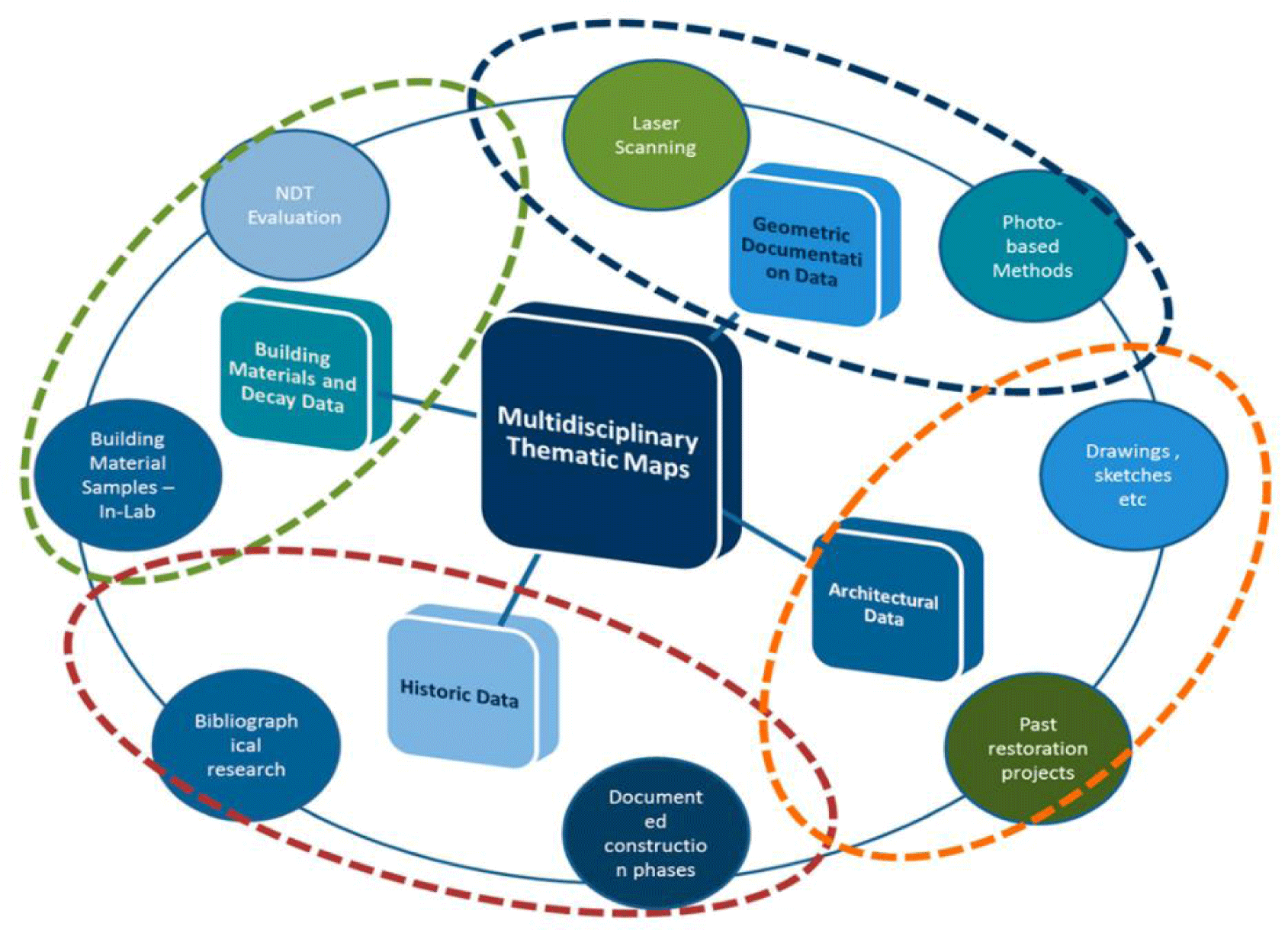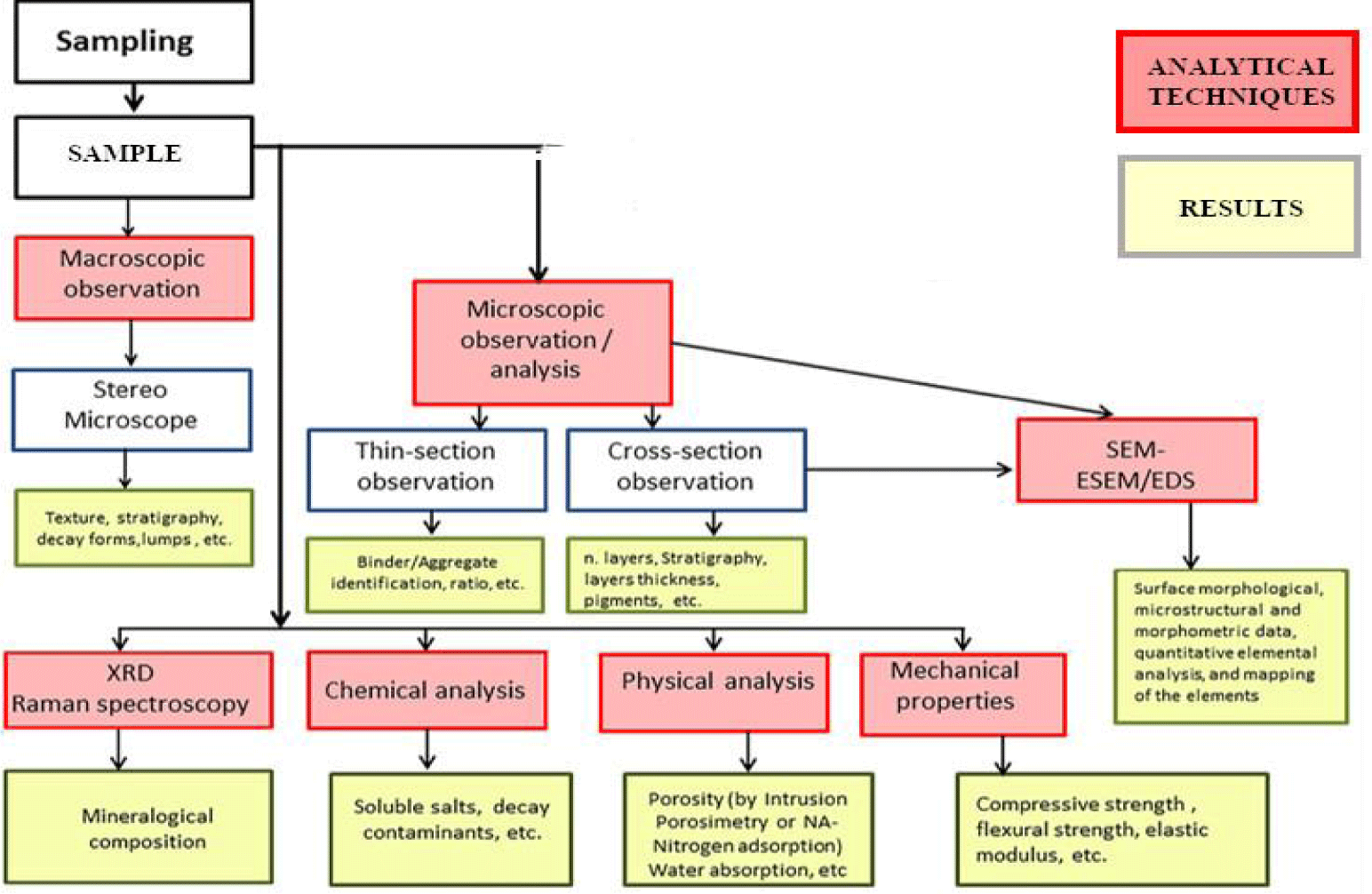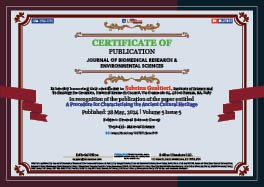General Science Group. 2024 May 28;5(5):496-500. doi: 10.37871/jbres1919.
A Procedure for Characterising the Ancient Cultural Heritage
Sabrina Gualtieri*
Abstract
This short article aims to provide a guide on how to approach the study of cultural heritage. It would also like to provide a relevant framework to promote dialogue between archaeologists, scientists, and conservation scientists. The objective is to furnish the widest possible picture of the type of analysis that can be used, of the results that are obtained from each of them and how this information can be useful to answer the questions that archaeologists, conservatives, and restorers ask themselves. Considering the short space available, we will not go into detail of the individual analyses.
Introduction
Knowing a cultural asset means being able to obtain from it information not only about the object itself but about the person, the people, the culture, that produced that object. It means reconstructing as much as possible the paths followed by a population, the location of settlements and the trade routes. Moreover, the knowledge of the processing techniques that have allowed the creation of an object, and the innovations introduced in the individual stages of a process also help us to define the technological level reached by a culture. The investigations are also directed to the study of degradation and phenomena that compromise the integrity of the object. In this way, the results represent the basis on which restorers and conservatives can work properly and plan a specific restoration intervention. In this context, the results of each technique are not limited and focused on a specific aspect but are part of data sets which can enable a wider and more meaningful evaluation of materials (Figure 1).
How to proceed?
Good investigation and restoration plans together with the effective restoration work require knowledge of the materials used in cultural heritage structures and objects. In some situations, this also includes knowing the state of conservation of the materials, the restoration materials to be used, their compatibility with the object on which you intervene and the techniques of application.
The fundamental thing is to define the procedure to be followed that considers the typology of ancient materials, the questions for which answers are sought and the use of a uniform and consistent standardized methodology, for example EN 17187 [1] and EN 16515 [2]. The procedure in figure 2 suggests a study methodology for ancient mortars, but it can be also followed for stones and ceramics or other type of materials. First, it stresses the importance of macroscopic study. In the case of large quantities of samples to be analysed, this approach is certainly useful for grouping and selecting samples representative of the various groups to be used for characterisation analyses. The proposed analytical sequence is certainly the most appropriate, as it allows a further selection by microscopy observation (optical and electronic). This scheme is useful because it correlates the typology of the analysis with the results that can be obtained, therefore it helps also in the choice of the analyses and therefore of the questions to be asked and of the answers that we want. The information can be obtained through mineralogical, petrographic, physical, chemical, and mechanical analyses.
Planning
The first step is correct sampling. The European standard -EN 16085 [3] lays down general rules for the sampling of materials of cultural interest. This means that you must be very clear about the questions you want to be answered. The material analysed must be able to give the answers we expect. If we want to do studies on poverty, we need to focus on materials that haven’t deteriorated, and if our goal is to preserve, it’s clear that we need to consider the deteriorated fragments.
Furthermore, it is essential that the sample chosen for the analyses is representative of the cultural object and that it is appropriate, in terms of size and homogeneity, to the type of analysis envisaged. It is important to distinguish between representative sample and selective sample. The first refers to a portion of the sample whose composition reflects that of the composition of the whole (eg: inclusions, degradation products, surfaces...), the second to portions of the sample whose composition does not reflect that of the composition of the whole (for example: inclusions, degradation products, surfaces...).
Incorrect or incomplete sampling can give accurate but not diagnostic results. The results can negatively affect the reconstruction of cultural migrations, the technological level reached and the restoration and conservation plan.
What is the sampling?
In short, sampling, in addition to being able to provide us with the appropriate answers, must be the least invasive possible procedure, must not produce aesthetic damage and must allow us to carry out all the analyses planned to use a single fragment.
We try to work with minimal quantities of materials that must be sampled in areas that are not exposed to sight but that we are sure that they belong to the object itself.
It is always recommended that sampling is done directly by the analyst or, if this is not possible, by following his directions.
It is essential to carry out sampling for the purpose of the study being undertaken. If the knowledge of the material is important, for example for a provenance or technology study, it is necessary to sample the material in unaltered areas (i.e., where there is no macroscopic evidence of degradation) only in this case it is possible to be aware that the results obtained are traceable to the raw materials used. This makes it possible to make comparisons with the raw materials available in what is believed to be the possible area of origin of the product. In appropriate sampling, those parts which may be more easily affected by the reworking should also be avoided. In the case of ceramic artifacts, for example, if possible, the handles or feet of the artifacts should be avoided as they are the most susceptible parts to breakage and therefore more easily replaceable. These parts are those that over time can always be added to an artifact, for example to embellish it, and then made with raw materials other than the original. This would lead to misinterpretations, which is misleading.
Very often, among other things, we tend to study a "unicum", that is, the sample that has original characteristics, different from all the others, but this does not give us information about the production of the entire archaeological context. We only get information about that sample; we are not able to understand which the machining techniques of the production center are. It is clear, however, that knowing a particular object better can satisfy the scientist’s curiosity and perhaps highlight attempts to introduce innovations in the productive context.
Knowledge of the materials
In order to plan a correct analytical program specific for our need it is crucial to ask: What is important to know? Which are the investigations to be conducted? What information do I get?
The answers allow us to develop a program of analysis that includes several analytical techniques whose results can help us clarify the doubts of archaeologists/historians and those restorers/conservators.
Two approaches can be followed depending on the type of material studied: use non-destructive analysis or use destructive analysis (even if with minimal material sampling) obtaining qualitative, semi-quantitative or quantitative results. Qualitative analyses allow us to identify the chemical elements and the mineral phases present in our object of study giving us an idea of the material; the quantitative analysis provides numbers that we can use to deal with greater certainty provenance studies and compatibility with any restoration material.
Techniques
In this context, a brief reference will be made to the destructive analytical techniques which provide quantitative information. In figure 1 a scheme of investigations is reported.
Generally, after creating groupings based on macroscopic observation or using stereoscopes also digital, the most representative samples are selected to proceed with the most invasive techniques. To make the most out of the available sample, we usually proceed with the petrological analysis in which the sample is reduced to a thin section to be observed with a polarizing microscope with transmitted light. Thin section residues are used to scan electron microscope observations and for microchemical analysis by EDS. The results obtained from these petrological observations allow the creation of new groupings that allow to reduce the number of samples to be subjected to further analysis, particularly the chemical (by means of XRF, AAS, ICP-OES, PIXE, NAA, etc.) and mineralogical ones (XRD, TG-DTA), which are also the most expensive.
Choosing which analytical techniques to use depends on the type of material being studied (Table 1).
| Table 1: Example of “what I ask and what I get”. | |||
| Question | Answer | Analytical Technique | |
| Study of provenance | Microstructural observations Minero-petrografic analyses | Optical Microscopy (thin section, transmitted and polarised light, reflected light) Electron microscopy (SEM-EDS) | Information on raw materials |
| Chemical composition | XRF, ICP-OES, PIXE, NAA | ||
| Mineralogical composition | XRD, Raman Spectroscopy, FT-IR | ||
| Study of production technology | Microstructural observations Minero-petrografic analyses | Optical Microscopy (thin section, transmitted and polarised light, reflected light) Electron microscopy (SEM-EDS) Porosimetric analysis (MIP) | preparation of raw materials focusing to the final use, manufacturing process, assembly of parts |
| Mineralogical composition | XRD, Raman Spectroscopy, FT-IR | Manufacturing processes | |
| Conservation study | Microstructural observations Minero-petrografic analyses | Optical Microscopy (thin section, transmitted and polarised light, reflected light) Electron microscopy (SEM-EDS) Porosimetric analysis (MIP) | Degradation products |
| Mineralogical composition | XRD, Raman Spectroscopy, FT-IR | ||
| Chemical composition | XRF, ICP-OES, PIXE, NAA, Soluble salts | ||
In particular situations, when it is not possible to proceed with sampling either because the object is intact or extremely fragile or it is a historic building, we opt for the use of non-invasive and non-destructive techniques. In the case of historic buildings, for example, techniques are widely used to know the physical characteristics. The Galvanostatic Pulse technique through on-site electrochemical measurements allows to evaluate the corrosion rate of the reinforcements in 20th century monuments; the Schmidt hammer provides information on the resistance of a concrete; the SUSI measuring system (an evanescent-field dielectrometry measurement system) allows to construct a map of the Moisture Content (MC) and salinity of the walls up to a depth of 23 cm; the thermographic analyses allow to evaluate the degradation of the structural elements).
In the museum sector, portable instruments such as Raman, FTIR, colorimeter, XRF are often used to obtain information on the chemism of materials, and partly on mineralogy. These techniques, however, do not provide exhaustive data, as there are many boundary factors that interfere with measurements. It is possible to run into misinterpretations, even considering that the analyses focus only on some of the aspects to be investigated and as already mentioned is the set of results provided by multiple analytical techniques that allow to have a broad vision and clarify interpretative doubts.
Conclusive Considerations
The choice of the analytical program is "vital" for a correct study of ancient materials. It is necessary to plan over time the analyses that can give useful answers to our archaeological study or aimed at restoration. It is important to combine more analytical techniques since it is the only way to have the most conclusive answers. It is also essential to consider economic availability because most analyses are very expensive. One way to reduce costs is to make selections on samples for analysis using less expensive techniques. Another way to save money is to consult an expert, who can recommend the right approach. It is also important to note that in studies involving the use of different analytical methods, a particular role is played by the Statistical Analysis that helps to treat the Data to obtain the best answers. It is therefore necessary to use advanced software for the accurate modelling of analytical data, that can detect the most suitable variables to be used to define the identifying characters of a given production and create reference databases or integrate with those already present. Until now, several multivariate statistical methods were used. These techniques allow us to consider at the same time the contribution of a greater number of variables and possibly their synergistic effect, removing the spurious information and highlighting useful information. Among these, linear Principal Component Analysis (PCA) and Clustering Analysis (CA and HCA) continue to be the widely used. A new approach is the multivariate statistical treatments proposed by Giannossa LC, et al. [4] that using NLPCA (Nonlinear Principal Component Analysis) and DA (Discriminant Analysis). NLPCA and DA are techniques based on the transformation of the original data. NLPCA ignores class labels and finds directions of maximal variance and is used as an exploratory approach; DA gives a classification model, knowing a priori the classes in which the data set is divided, and attempts to find a feature subspace that maximizes class separability.
References
- Conservation of Cultural Heritage - Characterization of mortars used in cultural heritage. 2020.
- Conservation of Cultural Heritage - Guidelines to characterize natural stone used in cultural heritage. 2015.
- Conservation of Cultural property - Methodology for sampling from materials of cultural property - General rules. 2012.
- Giannossa LC, Forleo T, Mangone A, The distinctive role of chemical composition in archaeometry. The case of Apulian red figure pottery. Appl Sci. 2021;11:3073. doi: 10.3390/app11073073.
Content Alerts
SignUp to our
Content alerts.
 This work is licensed under a Creative Commons Attribution 4.0 International License.
This work is licensed under a Creative Commons Attribution 4.0 International License.










